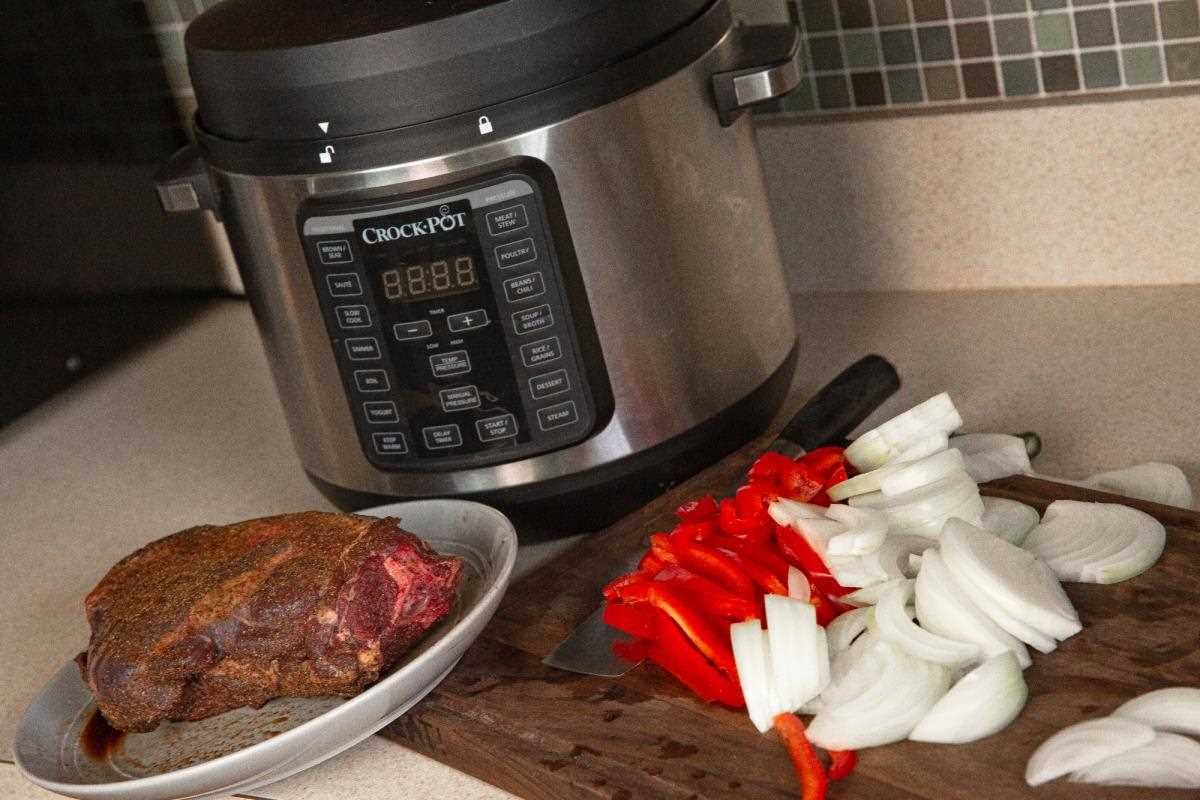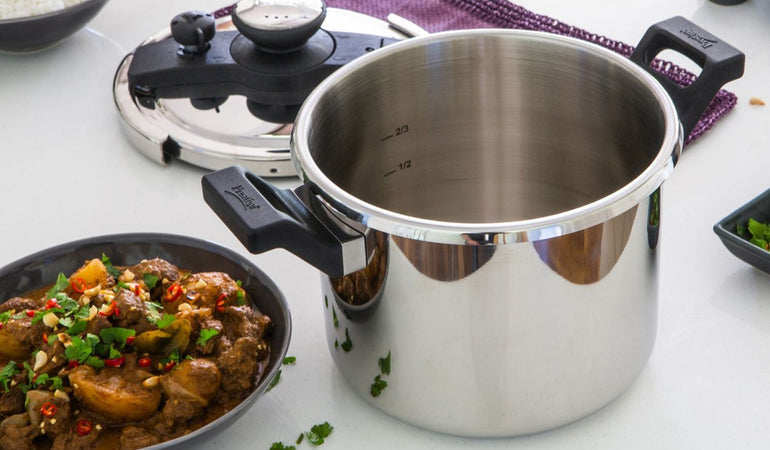Mouthwatering Delights: How to Cook Steak in a Pressure Cooker
Written By James Morgan
How to cook steak in a pressure cooker is a question that many home cooks and barbecue enthusiasts have pondered. The pressure cooker, revered for its speed and efficiency, opens up a world of culinary possibilities, including making the perfect steak. While grilling is the traditional method, the pressure cooker offers an equally compelling alternative for achieving tender, flavorful steak with ease.

The Allure of Pressure Cooker Steak
There's a certain romance to grilling that barbecue enthusiasts cherishthe smoky aroma, the beautiful char marks, and the communal atmosphere. However, the pressure cooker offers a convenient and equally appetizing method. One of the most compelling reasons to cook steak fast is the sheer efficiency. Unlike grilling, a pressure cooker locks in moisture and flavor, ensuring that each bite is tender and juicy. This method is particularly advantageous for those pressed for time or who wish to enjoy a professionally cooked steak from the comfort of their kitchen.

Gather Your Ingredients
Before starting, ensure you have all the necessary ingredients. Organized ingredients streamline the cooking process and prevent you from scrambling mid-recipe for a missing component. Here's a breakdown of what you'll need:
Ingredients
- 2-4 boneless steaks (ribeye, sirloin, or filet mignon are excellent choices)
- 1 tablespoon olive oil
- 4 cloves garlic, minced
- 1 onion, finely chopped
- 1 cup beef broth
- 1 cup red wine (optional but recommended for rich flavor)
- 2 tablespoons butter
- Salt and pepper to taste
- Fresh rosemary or thyme for garnish (optional)

Essential Tools and Equipment
The right tools are crucial for achieving your desired results. Below are key pieces of equipment that will facilitate your steak-cooking journey:
- A top-quality pressure cooker
- A sharp knife for cutting vegetables and trimming steak
- A sturdy cutting board

Step-by-Step Instructions
Pressure cooking can seem intimidating at first, but a detailed step-by-step guide can ease concerns and ensure exquisite results. Here's how to cook steak in a pressure cooker for a meal that will impress any palate.
Step 1: Prepare the Steaks
Select your cut of steak. Ribeye, sirloin, and filet mignon are excellent due to their tenderness and flavor. Trim any excess fat, pat the steaks dry with a paper towel, and season generously with salt and pepper on all sides. For an added touch, place the steaks in the refrigerator for at least 30 minutes to draw out moisture and intensify the seasoning.
Step 2: Sear the Steaks
Set your pressure cooker to the saut function and add a tablespoon of olive oil. Once hot, carefully place the steaks in a single layer. Sear for about 2-3 minutes on each side to develop a flavorful crust. This step not only enhances taste but also locks in the juices, contributing to a succulent final product. Remove the steaks and set them aside. They dont need to be fully cooked at this stage, as they'll finish under pressure.
Step 3: Saut the Aromatics
Without cleaning the pressure cooker, add another tablespoon of olive oil and saut the chopped onions until translucent. This process deglazes the pot, incorporating the caramelized bits of steak into the aromatic base. Add minced garlic and saut until fragrant, enhancing the rich, earthy undertones that complement steak.
Step 4: Deglaze and Add Liquid
Pour in one cup of beef broth and optionally, one cup of red wine. These liquids provide necessary moisture and elevate the sauce's depth and flavor. Use a wooden spoon to scrape the bottom, releasing any browned bits, which enrich the broth. Bring the liquid to a simmer, allowing the alcohol in the wine to evaporate for a well-integrated sauce.
Step 5: Pressure Cook the Steaks
Return the seared steaks to the pressure cooker, nestling them within the liquid and aromatics. Secure the lid and set the cooker to high pressure. Cooking times vary based on steak thickness and desired doneness. For medium-rare, cook for 10 minutes; for medium, cook for 12 minutes. Appreciate the efficiency of this methodthe process, which normally requires grilling expertise, is effortlessly handled by your pressure cooker.
Step 6: Natural Release and Rest
After the cooking cycle ends, allow the pressure to release naturally for about 10 minutes before quick-releasing any remaining pressure. Carefully remove the steaks and let them rest on a plate for a few minutes. Resting allows juices to redistribute, ensuring each bite is juicy and flavorful. While the steaks rest, focus on the final touches for your sauce.
Step 7: Enhance the Sauce
Switch the pressure cooker back to the saut function and add two tablespoons of butter to the cooking liquid. Stir continuously until the butter melts and integrates into the sauce, enriching it with a glossy finish and velvety texture. For a thicker sauce, simmer until it reduces to your desired consistency. Taste and adjust seasoning if necessary.
Step 8: Serve and Garnish
Plate the rested steaks, spooning the luscious sauce generously over them. Garnish with a sprig of fresh rosemary or thyme if desired. The final presentation should be visually appealing and delicious, akin to a restaurant-quality dish.
Pairing Suggestions and Sides
A perfect steak deserves perfect accompaniments. Consider pairing your steak with garlic mashed potatoes, sauted mushrooms, or a fresh garden salad. These sides complement the steak, balancing its richness with contrasting flavors and textures. A bold red wine, such as Cabernet Sauvignon or Shiraz, can further elevate the meal for a truly delightful dining experience.
Why Pressure Cookers Are Game-Changers
Learn how to cook steak in a pressure cooker and diversify your cooking skills. This appliance, often associated with stews and soups, proves it can rival traditional methods for dishes like steak. The pressure cooker uses steam and high pressure to cook food quickly and evenly, preserving moisture and enhancing flavors. This method aligns with the precision that barbecue enthusiasts value.
Additionally, modern pressure cookers come with programmable settings, safety mechanisms, and easy-to-clean inner pots, making the cooking experience seamless and stress-free. As more home cooks embrace this technology, its reputation as a kitchen staple grows, making it an essential tool.
Exploring Variations and Tips
Once you've mastered pressure cooking a steak, numerous variations await exploration. Experiment with different marinades or dry rubs for diverse flavor profiles. Adding vegetables like bell peppers, mushrooms, or potatoes into the pressure cooker introduces a hearty, nutritious dimension to your meal.
For an elevated experience, finish the steak with a quick broil in the oven after pressure cooking. This ensures a crisp, caramelized exterior, reminiscent of grilled steaks. Simply place the steak under the broiler for 2-3 minutes, monitoring closely to avoid over-charring.
Common Mistakes to Avoid
Even seasoned cooks can make mistakes when learning steak cooking tips in a pressure cooker. Overcooking can result in a tough, dry steak. Adhere to recommended cooking times and use a meat thermometer to ensure optimal doneness. Skipping the searing step can also compromise texture and flavor, as initial caramelization is crucial for depth and complexity.
Another common mistake is impatience with pressure release. A natural release ensures a gradual temperature decrease, enhancing tenderness. Quick releasing can lead to uneven cooking and moisture loss, reducing the steak's final quality.
Conclusion
Learning how to cook a steak in a pressure cooker opens a world of delicious possibilities. This method offers unparalleled convenience and delectable results, proving exceptional steak is attainable without traditional grilling. Embrace the efficiency and innovation of pressure cooking, and enjoy the exquisite flavors and textures that follow. Bon apptit!
Once you've mastered your cooking technique, it's essential to maintain your cookware. Invest in reliable cleaning products to keep your tools in top shape. Consider purchasing a cookware cleaner or cutting board oil to prolong the lifespan and functionality of your kitchen essentials.
As an Amazon Associate, I earn from qualifying purchases.



